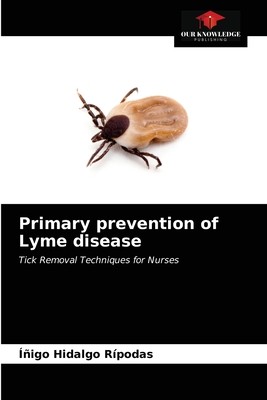
- We will send in 10–14 business days.
- Author: Ãñigo Hidalgo RÃpodas
- Publisher: Our Knowledge Publishing
- ISBN-10: 6203550523
- ISBN-13: 9786203550528
- Format: 15.2 x 22.9 x 0.4 cm, softcover
- Language: English
- SAVE -10% with code: EXTRA
Reviews
Description
Little known Lyme disease is a tick-borne disease transmitted by ticks of the genus Ixodes that can have cardiac, neurological and rheumatoid involvement. Through a systematic literature review of major databases and specialized websites, we searched for evidence of a relationship between the method of parasite removal and the risk of infection with Borrelia burgdorferi, the bacterium that causes Lyme disease. The evidence shows that extraction methods based on burning or drowning the parasite pose a high risk of infection. There are methods supported by current evidence such as traction of the tick, either with tweezers, fishing line or scalpel, or minor surgery to remove the parasite without manipulation. Based on this, we propose a protocol and its inclusion in out-of-hospital emergency centers to guide nurses in the choice of the ideal technique to extract ticks according to their characteristics.
EXTRA 10 % discount with code: EXTRA
The promotion ends in 7d.13:04:27
The discount code is valid when purchasing from 10 €. Discounts do not stack.
- Author: Ãñigo Hidalgo RÃpodas
- Publisher: Our Knowledge Publishing
- ISBN-10: 6203550523
- ISBN-13: 9786203550528
- Format: 15.2 x 22.9 x 0.4 cm, softcover
- Language: English English
Little known Lyme disease is a tick-borne disease transmitted by ticks of the genus Ixodes that can have cardiac, neurological and rheumatoid involvement. Through a systematic literature review of major databases and specialized websites, we searched for evidence of a relationship between the method of parasite removal and the risk of infection with Borrelia burgdorferi, the bacterium that causes Lyme disease. The evidence shows that extraction methods based on burning or drowning the parasite pose a high risk of infection. There are methods supported by current evidence such as traction of the tick, either with tweezers, fishing line or scalpel, or minor surgery to remove the parasite without manipulation. Based on this, we propose a protocol and its inclusion in out-of-hospital emergency centers to guide nurses in the choice of the ideal technique to extract ticks according to their characteristics.


Reviews